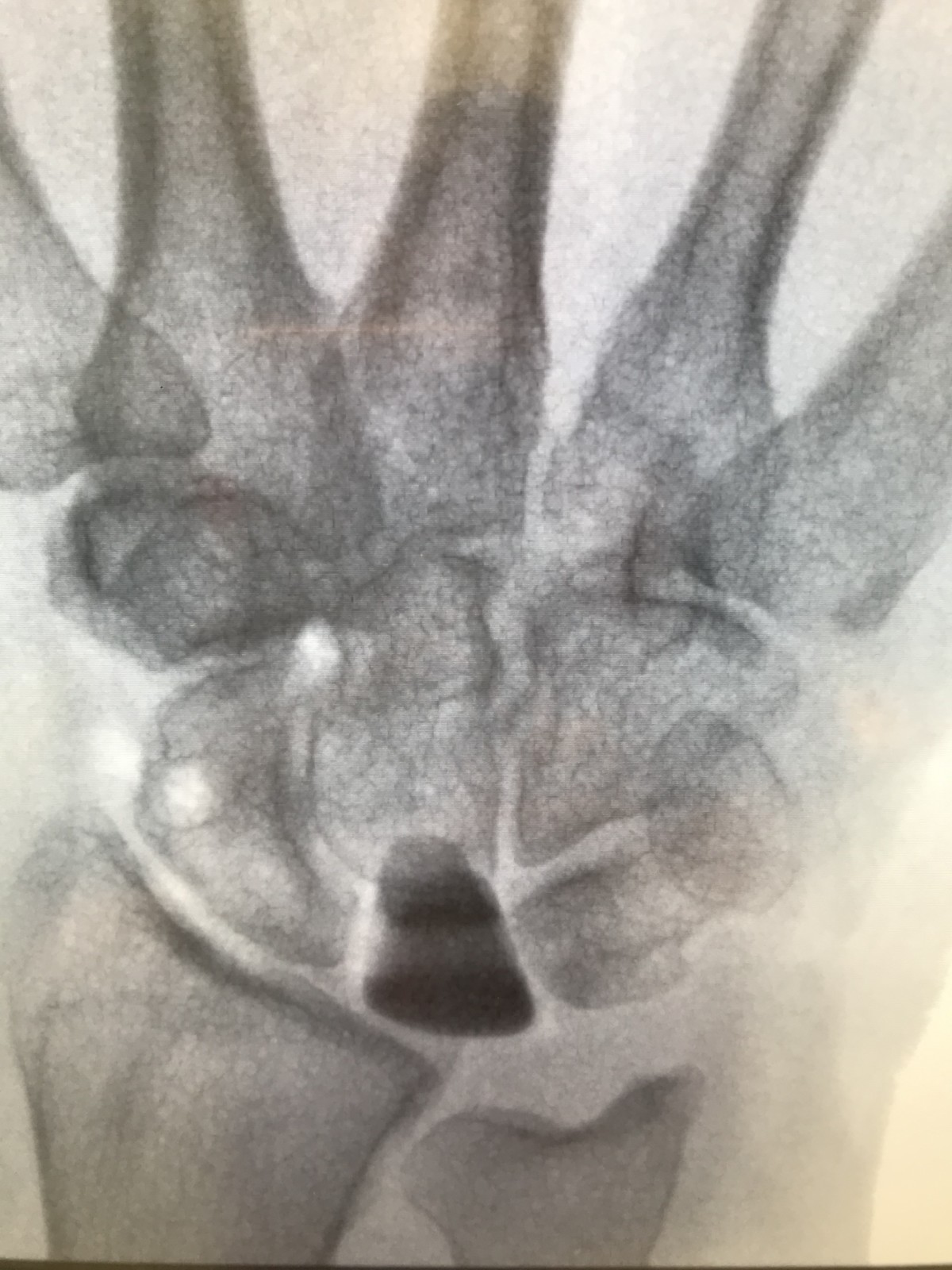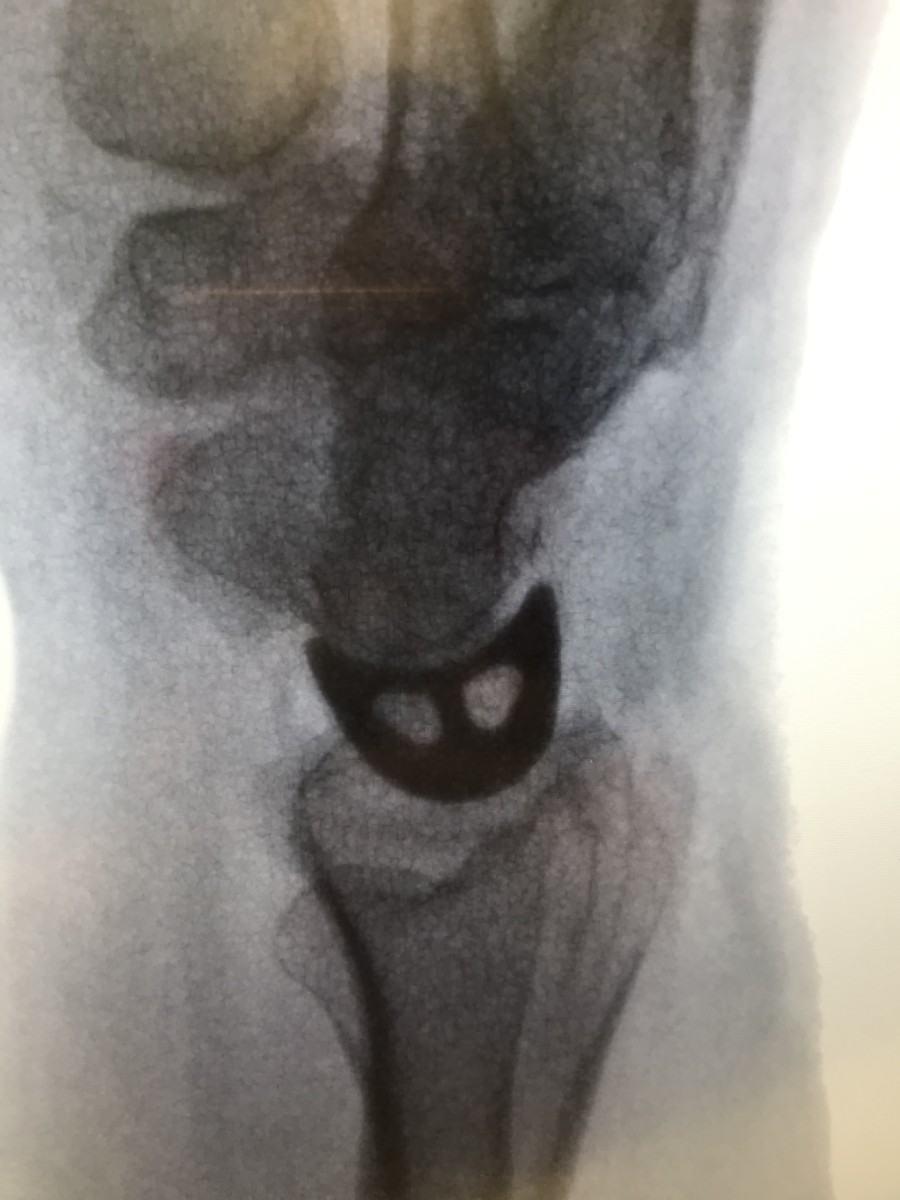What is Kienböck’s Disease?
Kienböck’s disease affects many people, some of whom may not even realise it. Today we will be looking at the finer details of the condition to help you decide if you need to seek consultation. It is in essence the loss of blood flow to the lunate bone in the wrist, causing it to die and break apart. In the long term this damage can lead to arthritis in other parts of the wrist. This disease occurs more commonly in Men than Women, between the ages of 20 and 40.
Causes
The exact cause of Kienböck’s disease varies as there is no evidence to suggest it is inherited. There are multiple factors known to exacerbate the condition, these include:
- Skeletal variations: Where the bones in the wrist may have grown in an abnormal manner, putting pressure on the lunate.
- Blood flow conditions: Having a pre-existing condition like Lupus or Sickle Cell Anaemia.
- Trauma: Even a single blow to the wrist can cause significant damage and worsen the condition. Alternatively repeated wrist motions that put pressure on the lunate can over time become equivalent a single heavy impact.
Signs and Symptoms
Kienböck’s disease is a subtle and slow developing condition that may not present obvious symptoms at first, and causes many people to only seek medical advice when in the later stages. It is important therefore to be aware of the warning signs that may be presenting themselves over time.
Motion and Strength
In the early stages, Kienböck’s disease may not present with outright pain but instead with a loss of motion and strength. If you feel stiffness and a decrease in the motion of your wrist, most obviously whilst trying to turn the hand upward, then this may be a warning of a deeper condition. You may also be experiencing a loss in the strength of your grip making it harder to hold onto smaller items. You may also notice a clicking/clunking sound coming from your wrist during movement. If you are experiencing these symptoms, especially after a remarkable impact, it is important to seek medical advice.
Pain and Swelling
As the condition progresses you may begin to experience more pressing symptoms. These indicators are far more noticeable especially when they’re combined with the aforementioned motion indicators. Sufferers of Kienböck’s will often complain of pain in the wrist, accompanied by swelling. A key warning sign would be a combination of the above, with pain or tenderness directly above the lunate bone.
You may be experiencing any or all of the symptoms listed above depending on how far advanced your condition is. One constant across all sufferers is that Kienböck’s only manifests itself in one wrist at a time, making it easy to compare an affected joint to a healthy one.
The Development Process
Early Stages
When the disease first manifests, it can be difficult to diagnose, as this relies heavily on the sufferer to seek medical advice, and to have targeting scans. At first, the lunate loses its blood supply causing stiffness and leading to pain and swelling. The bone will appear normal on an x-ray, but may show signs of the disease on an MRI scan.
Mid Stages
This is when the condition starts to cause the sufferer prolonged discomfort. The lunate has lost its blood supply, causing it to harden and become highly vulnerable to fracture. This development does mean that the changes to the density of the bone can be seen on an x-ray, leading to a more likely diagnosis.
Late Stage
At first the lunate will fracture and begin to collapse, and once this has happened the fragments will cause lasting damage to the nearby bones and will contribute to severe arthritis. If left undiagnosed up to this point the damage will be much harder if not impossible to correct. Not all sufferers reach this stage of the disease, but it is still vitally important that it is diagnosed and treated before reaching this stage.

A Lunate bone in the mid stages, showing up on an x-ray.
Diagnosis
People often ignore their symptoms for years, as they see them as so minor that they can’t be important. This is a common reason that the condition often goes unnoticed. It is also difficult for doctors to diagnose the disease, as in its early stages it wouldn’t present on an x-ray and would need a targeted MRI to discover it.
This means that to discover it the doctor will have to ask questions surrounding any symptoms you may be experiencing, a history of your medical conditions (especially anything concerning a blood flow disorder) and a history of any trauma your wrist may have sustained.
In later stages the condition could be picked up on an x-ray or when the patient has fractured their lunate and is suffering from the accompanying pain. A detailed CT scan would be helpful to determine the exact number and position of the lunate fragments that are causing issues in the wrist.
Treatment
If the disease is caught in the earlier stages then the options for treatment are simple and non-invasive. A treatment of anti-inflammatory drugs and rest, maybe in conjunction with a cast on the wrist, will alleviate the pressure on the lunate bone and can restore blood flow. Whilst this may not treat the underlying issue causing the disease it will help to slow its progression and prolong the time before more serious measures are required.
In later stages, doctors will often recommend surgery to correct the damage caused by Kienböck’s disease. There are a variety of procedures that can be employed to achieve this, and which one is employed depends upon the patient’s age, fitness and time they have for recuperation.

A damaged wrist that has been treated with Implant Arthroplasty
Revascularization
This process involves restoring the blood flow directly to the lunate bone. The surgeon will remove a healthy portion of another bone, with its blood vessels intact, and place it directly into the lunate. This procedure may require the use of an external fixator for some time afterwards, which is a metal device worn on the outside of the wrist, supporting the lunate via a series of pins which are inserted into the bone. Revascularization is only possible while the lunate bone is still intact, and so is an early stage option.
Proximal Row Carpectomy
A proximal row carpectomy (PRC) may be necessary if a patient is in the later stages of the disease, with the lunate bone having already shattered. A PRC involves removing the fragments of the lunate, along with the two bones on either side of it. This may be used in part with Implant Arthroplasty.
Implant Arthroplasty
This new procedure sees the removal of the lunate bone and replacement with a pyrolytic carbon material prosthetic. This procedure makes the removal of other bones in the wrist unnecessary and so preserves the patient’s natural anatomy.
Joint Levelling
If a patient has developed Kienböck’s disease through skeletal variations, then it is likely that they will receive this treatment. It involves either shortening or lengthening the radius and ulna bones where appropriate to relieve the pressure on the lunate bone, targeting the disease at its cause.
Fusion
This method is mainly focussed on targeting pain in patients in the later stages of the disease. It involves fusing either some or all of the bones in a patient’s wrist, essentially creating one large bone. This procedure comes at the cost of wrist mobility, but can largely eliminate the pain felt by the sufferer. When full fusion is employed, the patient retains the ability to rotate their forearm. This is potentially the most drastic procedure as it will permanently alter the patient’s anatomy.
Who can you speak to?
Ladan Hajipour is a Consultant Orthopaedic Surgeon with a clinical practise devoted to hand and wrist surgery. She is specialised in treating all hand and complex wrist fractures including soft tissue and degenerative disorders. Ladan has a wealth of experience in the field, including Kienböck’s disease. If you feel you are displaying any of the signs and symptoms listed above, it is important that you are seen by a medical professional. Contact Ladan Hajipour today.
Error: Contact form not found.


